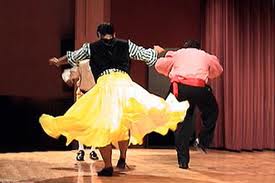Early Cuban bands played popular music for dances and theatres during the period 1780–1930. During this period Cuban music became creolized, and its European and African origins gradually changed to become genuinely Cuban. Instrumentation and music continually developed during this period. The information listed here is in date order, and comes from whatever records survive to the present day.
Típicas
For about a hundred years, from early in the nineteenth century to about 1920, the main orchestral format for popular music was the típica based on wind instruments, usually about 8–10 members. At the same time, there were also itinerant musicians, duos and trios: for them, see trova.
Orquesta Concho de Oro
Founded early in the 19th century by the black violinist and double bass player Claudio Brindis de Salas (1800–1872). It played the dance music of the epoch at the balls of the island's aristocracy: contradanzas, minuets, rigadoons, quadrilles, lancers. It was basically a típica, or wind orchestra, which was sometimes augmented to 100 players for special occasions such as fiestas.
Brindis de Salas, a disciple of the maestro Ignacio Calvo, was also a composer of creole danzas and the author of an operetta, Congojas matrimoniales. In 1844 his musical career was interrupted by his involvement in the Escalera Conspiracy, for which whites were absolved, but blacks paid dearly. Brindis de Salas was arrested and tortured. He was banished from the island by the Governor, O'Donnell. Returning in 1848, he was imprisoned for two years, and when he eventually was free to think about reorganizing his band, he found out that most of them had been executed.
Apart from the operetta, he is known for a melody dedicated to the General Concha, printed in 1854. His son, Claudio Brindis de Salas Garrido (Havana, 4 August 1852 – Buenos Aires, 1 June 1911) was an even better violinist, of world renown.
Orquesta Flor de Cuba
Founded by Juan de Dios Alfonso (1825–1877), clarinetist and composer. He moved to Havana, where he played clarinet in Feliciano Ramos's band La Unión in 1856, and directed La Almendares in 1859. It is not quite clear when he formed La Flor de Cuba, which became one of the most popular in the middle of the 19th century. They played contradanzas, and other dances of the time. The orchestra was a típica, with cornet, trombone, figle, two clarinets, two violins, double bass, kettle drum, and güíro. The figle (ophicleide) was a sort of bass bugle with keys, invented in 1817; the t-bone would be a valve trombone.

No comments:
Post a Comment